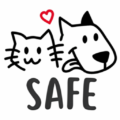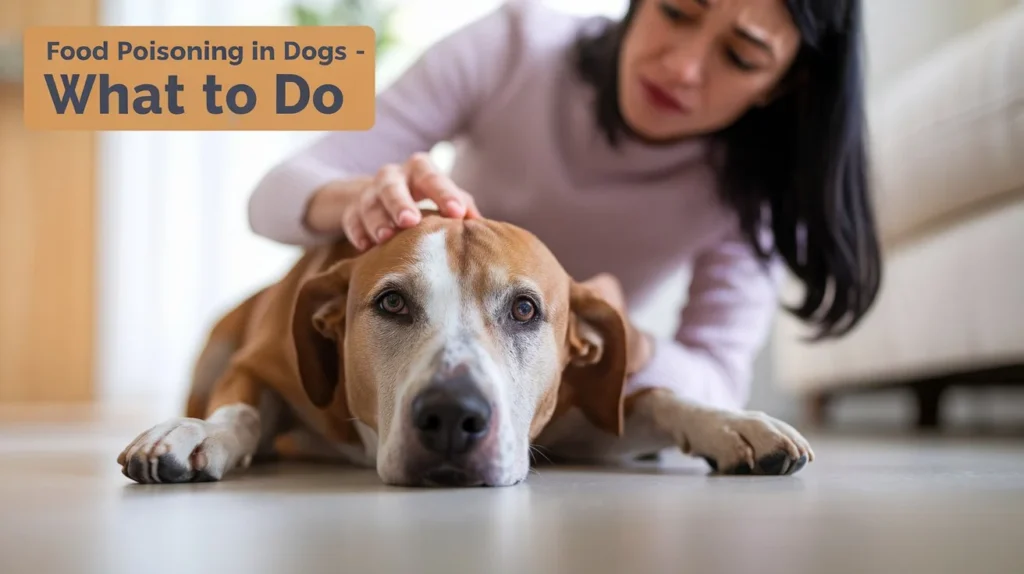One day, my Buddy ate a raw chicken drumstick when I wasn’t looking. That night, he got very sick. He threw up, didn’t want to eat, and looked sad. It was my first time dealing with food poisoning in dogs, and I didn’t know what to do.
Now I know a lot about what causes food poisoning in dogs and how to help. I want to share what I’ve learned so you can spot the signs, give the right care, and stop it from happening again. We’ll discuss toxic foods for dogs, how to keep their stomach safe, and when to visit an emergency vet for dog food poisoning.
You’re in the right place if you’re looking for simple tips, clear signs, and genuine help for your pup. Let’s learn how to keep your dog safe from food poisoning in dogs and help them feel better fast.
What Is Food Poisoning in Dogs?
Food poisoning in dogs means your dog ate something bad, like spoiled food, garbage, or something toxic. This can happen when food has bacteria, mould, or harmful stuff. When this happens, your dog’s tummy gets upset, and they start feeling sick fast.
Most of the time, this happens because of what causes food poisoning in dogs—things like raw meat, old leftovers, or food from the trash. Bacteria like Salmonella or E. coli can grow in food that isn’t fresh or clean. These germs make your dog sick when they get into their belly.
Some dog owners get confused about dog food poisoning vs stomach bug. They are not the same. A stomach bug can come from stress or a virus, but food poisoning in dogs happens when they eat something bad or dangerous. This is an important difference to know when you’re trying to figure out what’s wrong.
You might notice a few signs. Common food poisoning in dogs symptoms and remedies include vomiting, diarrhea, and being very tired. Your dog may also stop eating and start drooling more. In some cases, they may have a fever or act like they’re in pain. These are signs your dog’s tummy needs help.
If you ever wonder food poisoning in dogs what to do, start by keeping your dog calm and give them clean water. Then call your vet. They will tell you what to do for food poisoning in dogs and how to make your dog feel better. Acting fast helps protect your dog’s dog digestive health and keeps things from getting worse.
Knowing these signs and how to help is the first step to keeping your pet safe. We’ll look at more causes and pet food safety tips in the next part.
Common Causes of Food Poisoning in Dogs
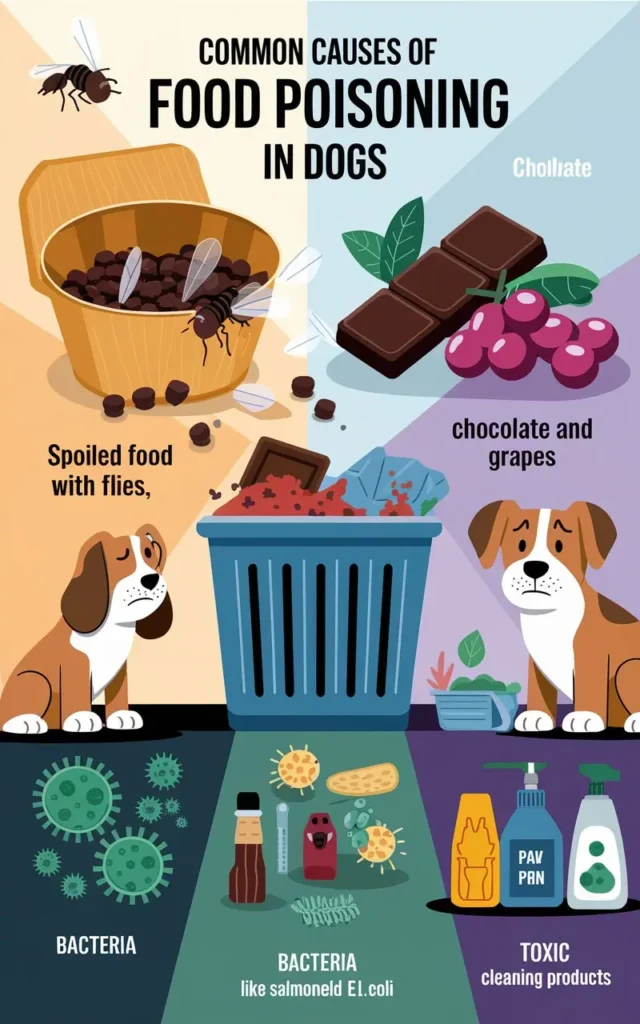
Dog Food Poisoning from Chicken
Dog food poisoning from chicken happens more than people think. If your dog eats undercooked or spoiled chicken, it can make them very sick. My friend once gave her dog some cold chicken from the fridge. A few hours later, her dog was throwing up and looked weak.
his kind of food can have Salmonella or Campylobacter. These are bad germs that cause food poisoning in dogs. They grow in meat that is old or not cooked all the way. To stay safe, always cook chicken fully. Don’t give dogs raw or smelly meat.
Can Dogs Get Food Poisoning from Raw Meat?
Yes, they can. Some people feed their dogs raw meat to be “natural.” But raw meat can be full of bad germs. These can hurt your dog’s dog digestive health. I once gave my dog a raw bone without knowing it had bacteria. He got sick and had to go to the vet.
If you want to feed raw food, be very careful. You must keep the meat cold and clean. This is one of the most important pet food safety tips. If you are not sure, ask your vet first. What causes food poisoning in dogs is often food that is raw or dirty.
Foods That Cause Food Poisoning in Dogs
Many foods we eat are not safe for dogs. These are called toxic foods for dogs. Even a little bit can make your dog very sick.
Here are some foods dogs should never eat:
- Grapes and raisins – They can hurt your dog’s kidneys.
- Onions and garlic – These hurt your dog’s blood.
- Chocolate – It can make their heart race.
- Moldy food – It has toxins that make dogs sick.
- Xylitol (in sugar-free gum) – It drops their blood sugar fast.
These foods are a big part of what causes food poisoning in dogs. Keep them far away from your pup at all times.
Dog Food Recall Food Poisoning
Even dog food from stores can go bad. Some dog foods get pulled off shelves. This is called a dog food recall. One time, my dog’s food was recalled because it had mold. I had no idea until I saw it on the news.
If your dog eats recalled food, they can get sick. You might see food poisoning in dogs symptoms and remedies like vomiting and being tired. This is why it’s good to check the news or vet websites for pet food safety tips. It helps you know what to do for food poisoning in dogs if it happens.
What to Do If You Suspect Your Dog Has Food Poisoning
One day, my dog ate old food from the trash. A few hours later, he threw up and looked very tired. I didn’t know what to do. If this happens to your dog, don’t worry. I’ll walk you through it.
The first thing to do is stay calm. Move your dog to a quiet place. Take away any food nearby. Give clean water, but don’t force your dog to drink. That’s the first step for what to do for food poisoning in dogs.
Read our step-by-step guide on how to treat food poisoning in dogs.
When to Go to the Vet
Sometimes, food poisoning is not too bad. But other times, your dog needs help fast. So, how do you know?
If your dog keeps throwing up, has blood in their poop, or acts weak, call the vet right away. These signs are not normal. They could be something worse, like canine gastroenteritis vs food poisoning. A vet can tell the difference.
This happened to me once. I waited too long, and my dog got very sick. Now, I always call the vet if I see these signs. It’s better to be safe.
Warning Signs to Watch For
Here are signs that mean your dog may be in danger:
- Throwing up again and again
- Poop with blood
- Shaking or twitching
- Very sleepy or won’t move
- Not drinking any water
These signs can mean bad food poisoning in dogs or something toxic. Some dogs eat things they should not—like chocolate or spoiled food. That’s what causes food poisoning in dogs.
If you see these signs, stop reading tips online. Call your vet. Fast help can save your dog’s life.
Food poisoning in dogs symptoms and remedies are not always simple. Your dog may need a vet to help their dog digestive health. Things like fluids, rest, and medicine may be needed.
I’ve learned that waiting can make things worse. Even if you’re not sure, ask your vet. Trust your gut.
Next, I’ll share what happens at the vet and how to help your dog feel better. I’ll also give easy pet food safety tips so this doesn’t happen again.
Diagnosing and Treating Food Poisoning in Dogs
When my dog got sick, I felt scared and confused. I took him to the vet right away. If you ever wonder what to do for food poisoning in dogs, the best first step is going to the vet. They will help you understand what’s going on and how to treat it.
What Happens at the Vet
At the vet, they will check your dog from head to tail. They may take some blood or poop to test. These tests help them tell if it’s canine gastroenteritis vs food poisoning. Both look the same, but they come from different things.
Food poisoning in dogs happens from eating bad or dirty food. A tummy bug like canine gastroenteritis can come from a virus. That’s why tests help. The vet needs to know what made your dog sick before they can help.
If you don’t know what your dog ate, that’s okay. I didn’t know either. Just tell the vet what you saw or smelled. Even small details can help them figure out what’s wrong.
How Vets Treat Food Poisoning
The vet will treat your dog based on how sick they are. Some dogs get better with rest. But if your dog is very weak or keeps throwing up, the vet may give IV fluids to stop dehydration. They might also give anti-nausea meds or other medicine.
This care helps your dog’s dog digestive health stay strong. It also helps them feel better faster. I was surprised how much my dog improved after just one day at the clinic.
These treatments are part of the answer to food poisoning in dogs what to do—don’t wait and hope it passes. Vet care works best when given early.
How Much It Can Cost
Taking your dog to the vet may cost a little or a lot. A simple visit might be $50 to $100. But if your dog needs tests, fluids, or stays overnight, it could cost more.
When my dog got sick, the bill was $150. It was a lot, but I was happy to pay it. Now I use pet insurance, which helps cover big bills like this.
If you’re worried about money, ask your vet if they offer payment plans. Also, learning pet food safety tips can help you avoid big vet bills in the future.
Dog Food Poisoning Recovery Time
When my dog got sick, I just wanted to know one thing—how long until he feels better? The answer is different for each dog, but I’ll tell you what I learned.
If it’s not too bad, your dog may feel okay in one or two days. That’s what happened when my dog ate a tiny bit of spoiled food. I gave him water, let him rest, and fed him soft rice and chicken. That helped his dog digestive health bounce back.
But if your dog ate something really bad, it might take a few more days. My Buddy needed about a week to get better after eating raw chicken. He was very tired and had to go to the vet. That’s why it’s good to know what to do for food poisoning in dogs right away.
Learn how long dog food poisoning lasts and when to expect improvement.
How to Help Your Dog Feel Better
Let your dog rest in a quiet room. Give clean water, but don’t force it. Small sips are best. Don’t give them treats or people food. This helps protect their dog digestive health.
Watch for signs like vomiting, being sleepy, or not eating. These are part of food poisoning
in dogs symptoms and remedies that every pet owner should know. If you want a more complete breakdown of what to watch for, check out our full guide on the symptoms of food poisoning in dogs.
When my dog felt sick, I made him soft food at home. Plain chicken, white rice, and a spoon of plain pumpkin helped a lot. I also gave him a dog-safe probiotic after asking my vet. That got his belly feeling better faster.
Food Safety Is Key
Now I’m extra careful with what I feed my dog. I don’t leave food out. I check the fridge for old meat. I even learned pet food safety tips to stop it from happening again.
What causes food poisoning in dogs is often food that’s spoiled or not cooked right. Sometimes it’s from the trash or dropped snacks. A good rule? If you wouldn’t eat it, don’t let your dog eat it either.
If you ever feel unsure, call your vet. It’s better to be safe. Some signs look like a tummy bug, but it could be worse—like canine gastroenteritis vs food poisoning. A vet can tell you what’s wrong and help your pup feel better.
every dog owner should know. They also help prevent long-term problems and support better pet food safety tips in the future.
Preventing Food Poisoning in Dogs
Keeping our dogs safe starts with one simple thing—prevention. Trust me, after watching my Buddy get sick from eating raw chicken, I learned this the hard way. But now, I never take chances with what he eats. Let’s talk about the small things you can do every day to protect your pup from food poisoning in dogs.
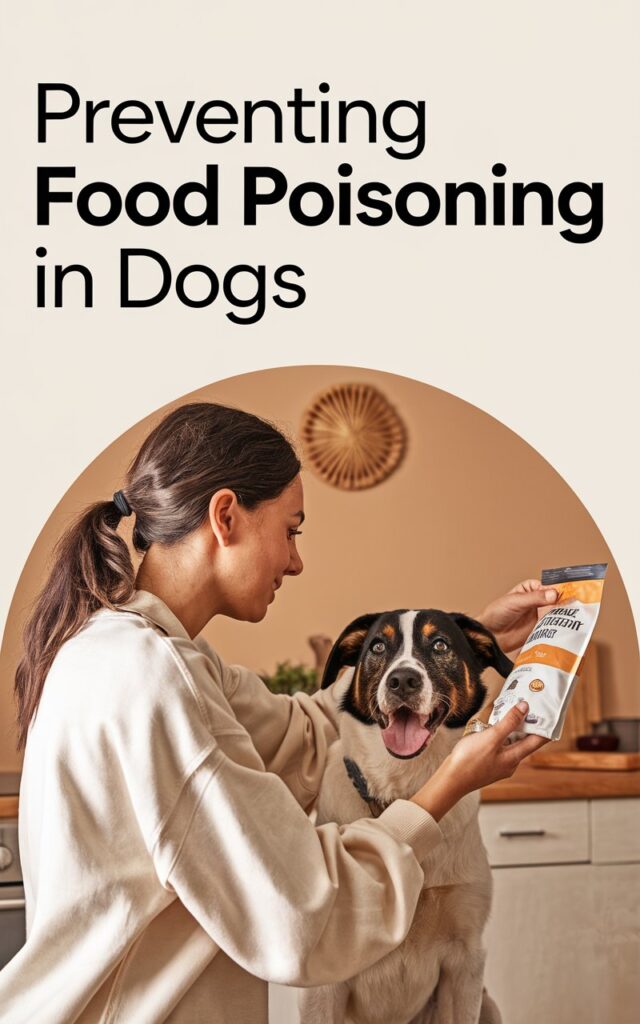
Preventing Food Poisoning in Dogs Through Training
Training your dog can literally save their life. One of the best things I ever taught my dog was “leave it.” It sounds simple, but it stopped him from eating a mouldy sandwich someone dropped at the park. That sandwich could’ve been full of toxic foods for dogs, or even worse, mold toxins that hurt their liver.
Monitoring Your Dog’s Environment
Dogs are curious. Mine acts like the backyard is a buffet. Rotten fruit under trees, old food in the trash, weird stuff on the sidewalk—if you’re not watching, they’ll eat it. And sometimes, it’s those random outdoor things that cause serious problems.
One time, my dog found a chicken bone in a neighbour’s trash pile. I didn’t see it until it was too late. A few hours later, we were at the vet dealing with vomiting and dehydration. It was classic food poisoning in dogs, and I’ll never forget how scared I was.
That’s why I now keep a close eye on the yard, the park, and even my kitchen trash. Securing your garbage and cleaning up leftovers right away is a simple way to stop your dog from getting into trouble.
These habits are small but powerful. They help reduce your dog’s risk of everything from a minor bellyache to severe issues like canine gastroenteritis vs food poisoning. And trust me—what to do for food poisoning in dogs is never as easy as just “waiting it out.”
You might also want to try some safe home remedies for dog food poisoning.
Choosing High-Quality Dog Food
Not all dog food is created equal. I used to buy whatever was on sale, but after a dog food recall left my pup sick and scared, I changed that. Now, I choose brands that are clear about their ingredients and have strong safety records.
Check for things like expiration dates, damaged packaging, or odd smells. Stay updated on recalls by signing up for alerts from trusted vet websites. It’s a simple step that can save your dog a world of hurt—and save you from a scary night at the emergency vet.
Picking high-quality food also supports your dog’s long-term digestive health. And that’s what it’s all about—giving them a life that’s not just long, but healthy and happy, too.
If there’s blood in your dog’s poop, see our guide on bloody stool and food poisoning in dogs.
My Personal Story: What I Learned From My Dog’s Food Poisoning Incident
The day my Buddy snuck that raw chicken drumstick off the counter felt like any other day—until it wasn’t. That night, he started throwing up. He wouldn’t eat. His eyes looked glassy and sad, and I knew something was wrong. My heart dropped. I didn’t know if it was just a stomach bug or something worse.
Looking back, I did a few things right. I stayed calm, gave him clean water, and called the vet as soon as things didn’t improve. They told me to bring him in—and fast. That call probably saved him. He ended up needing fluids and meds, but he bounced back in a few days.
But honestly? There’s a lot I wish I had known sooner.
I didn’t realize how dangerous raw meat could be for dogs. I thought, “Wolves eat raw meat, so why not?” But dogs today aren’t wild animals. Their stomachs can’t handle the same things. That chicken was full of bacteria—and I had no idea.
Now I keep raw food far away from my dog. I don’t leave food out. I double-check the fridge. And I trained him to “leave it,” which has saved us more than once (especially at the park).
If I could give dog parents one tip, it’s this: trust your gut. If your dog eats something sketchy, call your vet. Even if you think it’s no big deal. It’s better to be safe than scrambling later.
Also, know the signs—vomiting, diarrhea, acting tired, not eating. These are the red flags. I’ve learned to spot them fast, and it makes a huge difference.
Most of all, I learned that accidents happen. Even the most careful dog parents can miss something. Don’t beat yourself up. Just do your best, learn from it, and keep your pup safe moving forward.
That one scary night changed how I care for my dog. And maybe, by sharing this, it’ll help you avoid the same fear I felt.
FAQ of Dog Food Poisoning
Can dogs get food poisoning?
Yes. Dogs can develop food poisoning from bacteria (like Salmonella, E. coli, Campylobacter, Listeria) or toxins in spoiled, undercooked, or contaminated food. Symptoms include vomiting, diarrhea, lethargy, and sometimes neurological signs like tremors or seizures
What are the earliest signs of food poisoning in dogs?
Common early signs include:
1. Vomiting and diarrhea (occasionally with blood)
2. Loss of appetite and energy
3. Excessive drooling
4. Fever or abdominal pain
These symptoms typically appear within a few hours of ingestion
What should I do if my dog gets food poisoning?
1. Stay calm.
2. Move them to a quiet area.
3. Offer small amounts of clean water—don’t force feed.
4. Fast them for up to 24 hours if only mild vomiting occurs.
5. Call your vet immediately if symptoms persist, worsen, or include blood, lethargy, neurological signs, or dehydration
When should I see the vet?
Seek immediate veterinary help if your dog:
1. Vomits repeatedly
2. Has bloody diarrhea
3. Appears very weak or unresponsive
4. Drinks no water
5. Shows neurological symptoms (tremors, seizures)
Early intervention can prevent complications and ensure proper supportive treatment, like fluids or anti-nausea medication
What human foods are toxic and can cause food poisoning?
Keep all these well-known toxins far from your dog:
1. Chocolate
2. Grapes and raisins
3. Onions, garlic, chives
4. Xylitol (in sugar-free gum/candy)
5. Macadamia nuts
6. Alcohol
7. Yeast dough
8. Avocado
Even tiny amounts can cause serious health issues, like kidney failure or anemia, and some act quickly, within hours
Conclusion
Food poisoning in dogs can be scary, but knowing what to look for—and how to act quickly—can make all the difference. If your dog eats something bad and starts showing signs like vomiting, diarrhea, or weakness, don’t wait. Call your vet right away.
As a pet expert and a dog parent myself, I’ve learned that being prepared is the best way to protect our furry friends. Keep dangerous foods out of reach, know the signs of trouble, and trust your gut if something seems off.
Remember: your dog depends on you to keep them safe. With a little care and quick action, most pups bounce back just fine. You’ve got this—and so does your best friend.
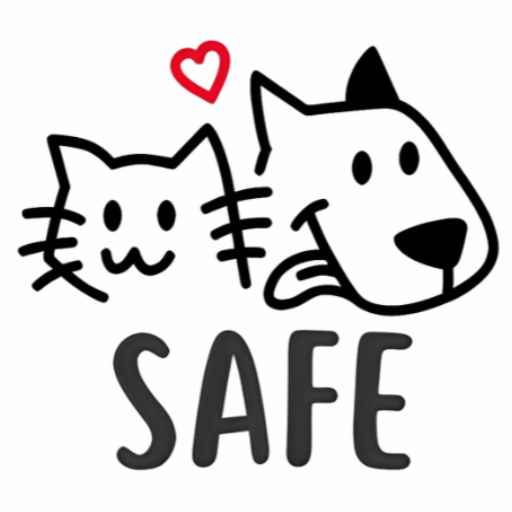
We’re the dedicated team behind MyPawSafe.com, with over a decade of combined experience in veterinary care, pet emergency response, and animal behavior. While we prefer to let our work speak for itself, our mission is clear: to provide science-backed, vet-approved advice that helps pet owners prevent accidents and save lives.
